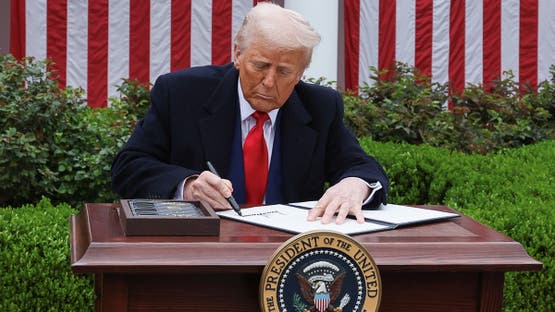THE WORLD WILL BE BETTER WITHIN FEW WEEKS

By General Monzer Al Ayoubi

Translation: Dr Pierre A. Sarkis
Revealing the start of a statement, not a hint, in front of cameras that he fancies to achieve presence or satisfy arrogance, as in “every praise about your range is inadequate”, we hear what the Prime Minister of the occupying state, Benjamin Netanyahu, does not want, which is the decision to open the American door to Iran for talks that will lead to an agreement that would stop its nuclear program, places restrictions on the “nano” scale of enrichment, which the Iranian leader considered one day to be the glory in the face of adversities.
Moreover, both his envoy to the Middle East, Steve Witkoff, and Iranian Foreign Minister Abbas Araqchi, displayed warmth read on the spreads of the meetings, which although not direct, effective in results. This angered and worried Benjamin Netanyahu because the bet fell on the failure of a missing word from President Trump’s lexicon, a flexible approach that he mastered in every issue or deal ranging between two limits: minimum and maximum. In context, Netanyahu did not think that his attempts to continue to evade the regionally dominant American strategic decision would be expensive. The applause he received on the congress floor during his visit to Washington, DC, last July, was a hollow folklore from a snake with a mane, for someone who committed genocide and atrocities and has no value for the master of the White House; at the time, former Democratic House Speaker Nancy Pelosi called his speech “the worst by any foreign leader on Capitol Hill.”
On the other hand, his tour of the Arab Gulf countries was not only a retroactive financial harvest, nor do his statements fall within Henry Kissinger’s concept of “constructive ambiguity”, for the behavior of Trumpism is based on a pattern of political discoloration or thumbs-up, for any decision away from contradictory interpretations that are maneuvers hovering over the letterheads of an agreement. It has become clear that President Trump is laying the foundations of a new international reality based on the achievement of a peace strategy, instead of a conflict management policy based on the following tools:
– Diplomacy of direct or indirect communication aimed at the success of the negotiations, with the setting of initial time limits to avoid the risks of changing circumstances or data.
– The policy of gradual maximum pressure on the adversary countries, leading to the imposition of intensive sanctions in all fields, especially financial, economic, energy, etc.
– Mobilizing military forces intended to threaten or deploy where appropriate, “we will continue to promote peace through force in the region, building on the momentum of the ceasefire to expand peace agreements.” This is reminiscent of the official logo of the nuclear-powered USS Ronald Reagan aircraft carrier (achieving peace by force) which raises the permanent dialectic question: is the use of force a balanced approach to impose peace or impose surrender?
On the other hand, the visit of the US President to the Kingdom of Saudi Arabia came first to confirm the pivotal role of the proceedings and talks at the regional level, whether through his meetings with the leaders of Gulf countries in Riyadh or in terms of consolidating its interactive geopolitical position with Middle East issues in coordination with the US Administration. In the same context, it is noteworthy to mention the importance of the meeting between President Trump and Syrian President Ahmed al-Shara, with the participation of Turkish President Recep Tayyib Erdogan through a video call, in the presence of Saudi Crown Prince Mohamed Bin Salman, and to meet the latter’s request to lift sanctions of the Ceaser Act on Syria, to canonize al-Sharaa as the president of Syria on the basis of the latter achieving what is asked of him: to protect Druze, Alawite and Christian minorities in Syria and allow them to participate in governance; stop the appointments in the military of extreme foreign leaders from STAN countries and expel militants; join the Abraham Accords and normalization of relations with Israel.
At this point, fate turns back to square one, concluded and unchangeable, for there is a lack of the will to disengage the connections of some leaders with the outside, as well as, assuming a national responsibility. It seems there is no plot against the principle of “the unity of path and destiny”, concluded between Syria and Lebanon which colored Syrian-Lebanese relations for decades, but rather a turn to the opposite direction fed to President al-Sharaa to ensure his survival, based on the fall of the axis of resistance in the region.
Based on the roundup of Gulf countries and the thorny global issues raised (the war of extermination in Gaza, the Russian military operation in Ukraine, the Iranian file, the Houthi attacks, etc.) in addition to imposing US strategic vision on the countries of the world, gaining US friendship has become a necessity and an asset, if not to ward off tutelage, or slide into a confrontation. Before leaving Abou Dhabi for Washington, President Trump pledged that” the world will be a better place in few weeks” adding “I will meet with President Putin once we can arrange it.”
Within a logical oscillation between positive and negative, the strategic role of the United States has been restored with qualitative weight at the level of the Middle East and the region, after the abandoning of the tag of former President Joe Biden’s policy. It has also been proven that President Trump has the final word free from the Zionist lobby, and ignoring a visit to Tel Aviv is the first sign of Netanyahu’s fall and his political exile, which perhaps makes the region somewhat a better place.
Beirut, 17/05/2025
Scholars in Security and Strategic Affairs
تابع آخر الأخبار والتنبيهات أولًا بأول.

